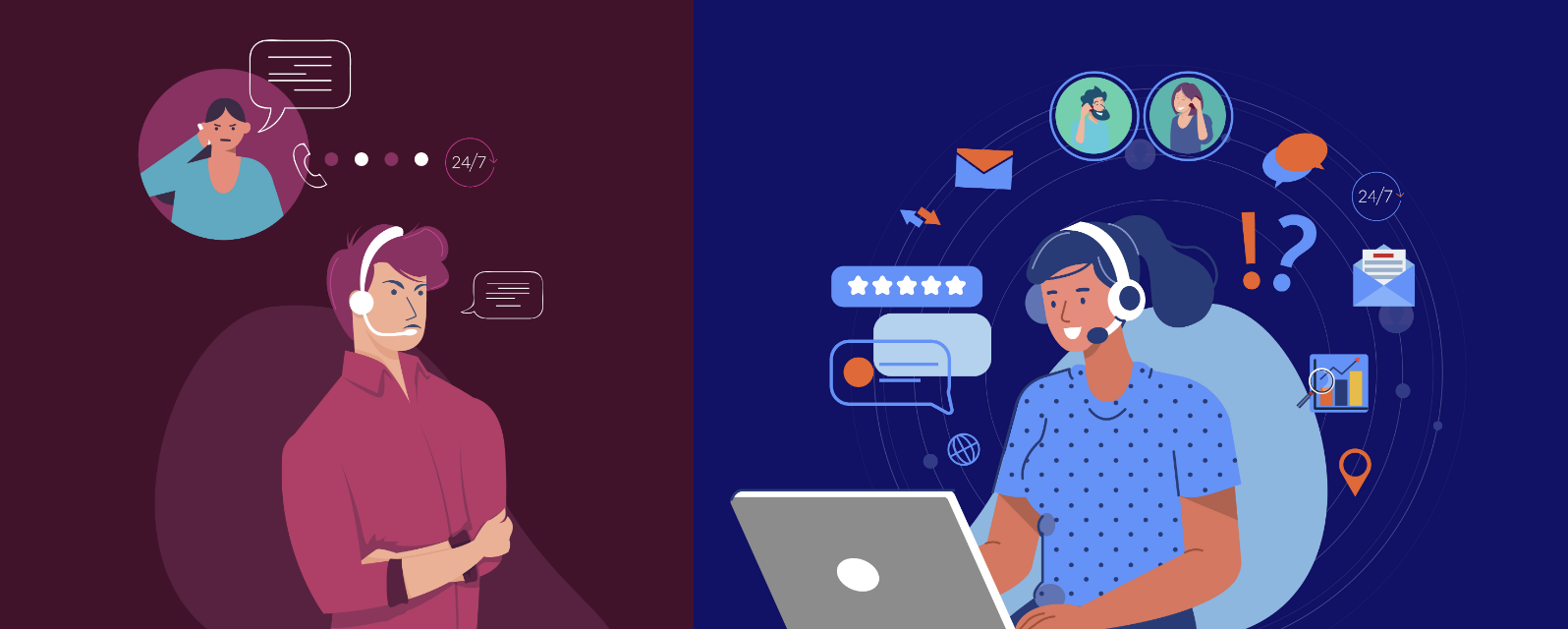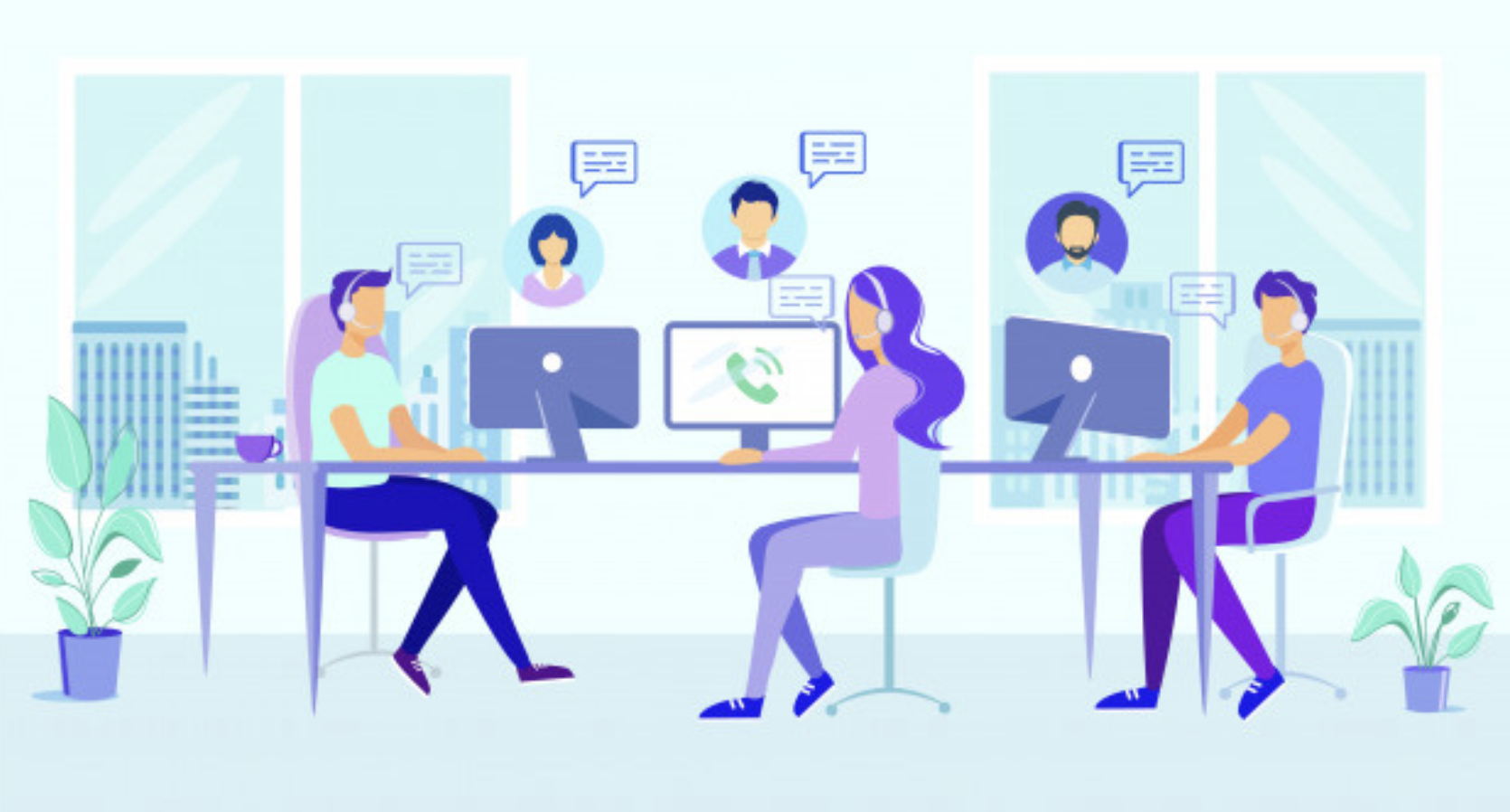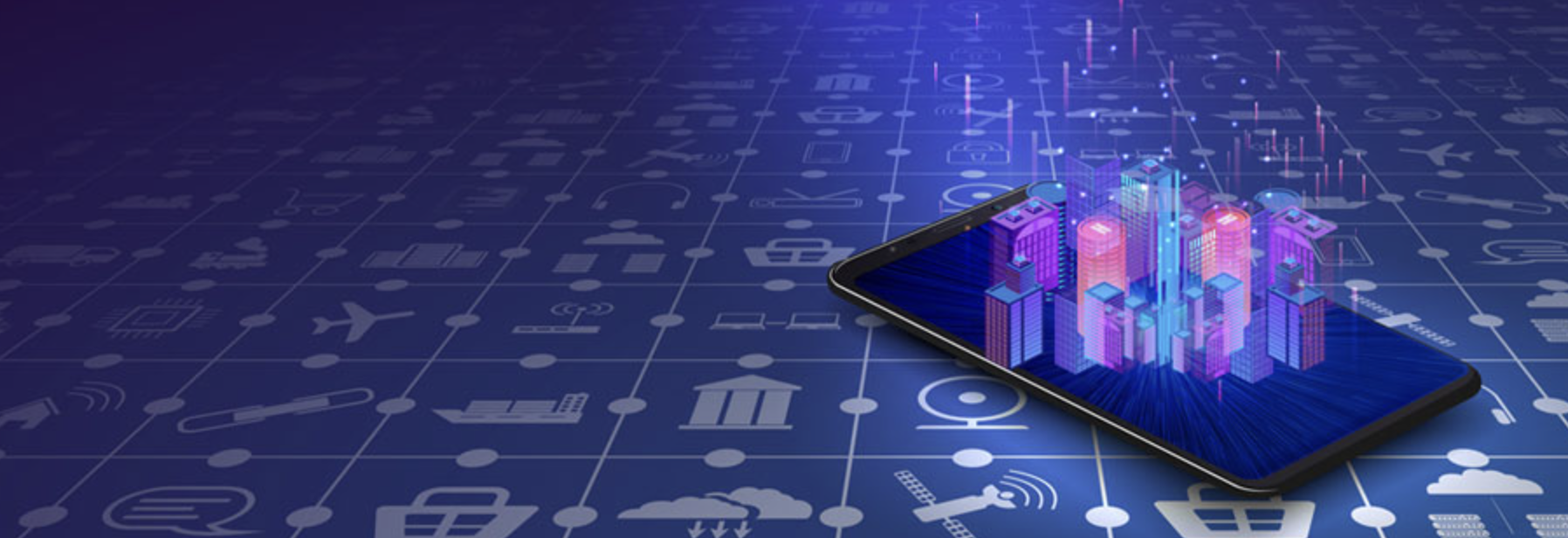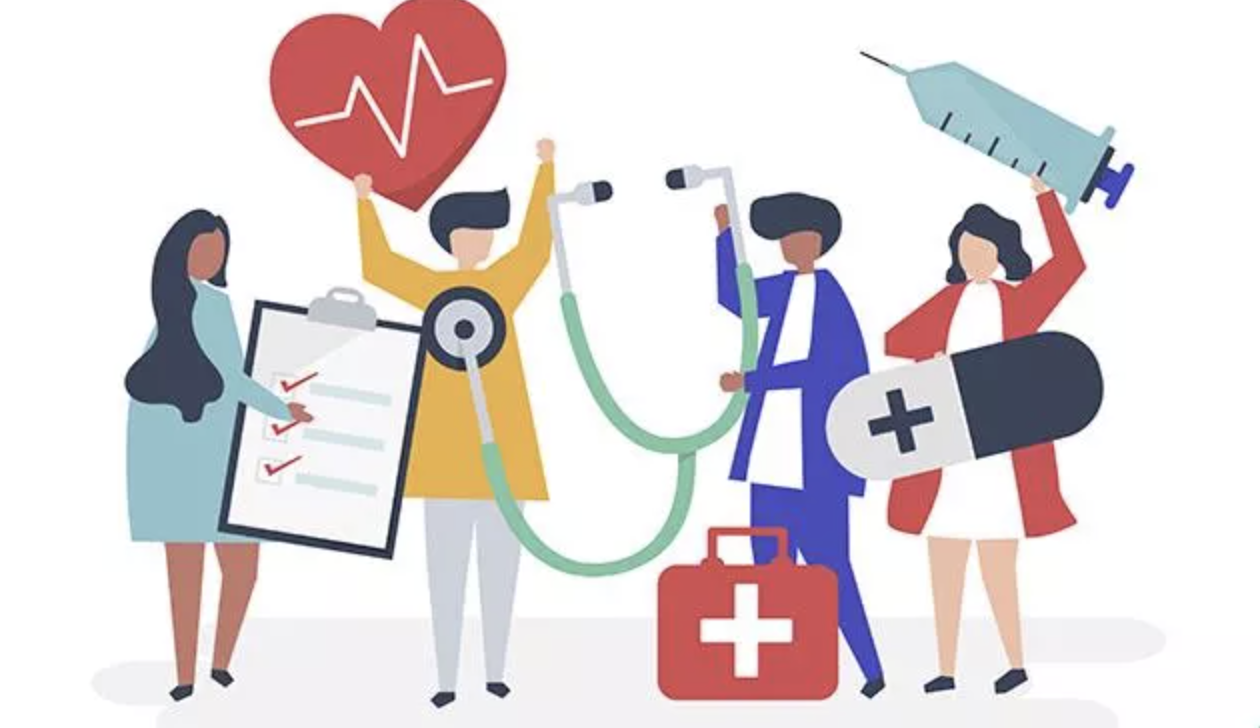- Published on
What is a call center?
- Authors
- Name
- David Dean
- @mthoodlum
What is a call center?

Definition: A call center is a centralized organization that handles inbound and outbound calls from current and potential customers. Call centers are located either within a single organization or outsourced to another company that specializes in handling calls.
TurnkeyISP is a live answer, virtual, blended, outsourced, telco contact center. This article will explain exactly what that means.
What is the difference between a call center and a contact center?

Call centers typically focus on one communication channel: phone calls. Contact centers provide support from additional channels of customer interaction, including email, chat, text messages, websites and applications. A contact center may include one or more call centers.
Contact centers provide omnichannel support, assisting customers on whichever channel or device they prefer. Whether an organization chooses a call center or contact center depends on its products and services, the channels on which it provides customer support and the structures of the organization's support teams.
How do call centers work?
Online merchants, telemarketing companies, help desks, mail-order organizations, polling services, charities and any large organization that uses the telephone to sell products or offer services use call centers. These organizations also use call centers to enhance customer experience (CX.)
The three most common types of call centers are inbound, outbound and blended call centers.

Inbound call center
Typically, these call centers handle a considerable volume of calls simultaneously and then screen, forward and log the calls. An interactive voice response (IVR) system can answer calls and use speech recognition technology to address customer queries with an automated message or route calls to the appropriate call center agents or recipients through an automated call distributor (ACD).
Agents in an inbound call center may handle calls from current or potential customers regarding accounts management, scheduling, technical support, complaints, queries about products or services, or intent to purchase from the organization.
Outbound call center
In these call centers, an agent makes calls on behalf of the organization or client for tasks, including lead generation, telemarketing, customer retention, fundraising, surveying, collecting debts or scheduling appointments. To maximize efficiency, an automated dialer can make the calls and then transfer them to an available agent after the caller connects. In the USA, outbound call centers must ensure compliance with the National Do Not Call Registry, a list to which U.S. citizens can add their phone numbers to avoid unwanted solicitation calls.
Blended call center
This type of call center handles both inbound and outbound calls. A blended call center might also do customer call backs if the call gets disconnected or to follow-up after the call to make sure the customer is satisfied.
Importance of call centers

Businesses typically have limited hours of operation and limited staff available for customer interaction. Call centers allow the businesses to centralize their customer service interactions to extend their customer service hours and share customer service staff with other companies to scale their customer service. This is especially helpful if there is a widespread problem that might cause many inbound calls at once like a service disruption.
Customers have high expectations for customer service. They want their issues addressed and handled quickly and efficiently. Organizations must have representatives available when customers call for service or support, and those with call centers can more effectively assist customers in need. Call centers can make an organization available 24/7 or during a time window that matches customer expectations.
Customer phone calls have value beyond customer service. With some products or services, phone calls are the only interactions organizations have with customers -- therefore, the only opportunity to personally connect with customers.
Types of call centers
Beyond inbound, outbound and blended, further classifications of call centers include the following:

In-house call center

The organization owns and runs its call center and hires its agents.
Outsourced call center

The organization hires a third party to handle calls on its behalf, generally to remove the burdens of hiring and training call center agents and investing in and updating call center technology, which can reduce operating costs.
Offshore call center
The organization outsources its operations to a company in another country, often to save money on wages and provide services around the clock. Drawbacks to an offshore call center include reduced customer satisfaction due to language issues and a lack of knowledge about the organization, product or service due to distance.
Virtual call center
The organization employs geographically dispersed agents who answer calls using cloud call center technology. Call center agents work either in smaller groups in different offices or in their own homes.
Call center teams and structure
Many different roles make up call center teams, including agents, team leaders and IT personnel.
Call center agents

Agents are the key point of contact between an organization and its customers, as agents talk directly with customers and handle their calls. Depending on the type of call center, agents may handle either incoming or outgoing calls. Call center agents typically have customer service skills, are knowledgeable about the organization and are creative problem-solvers.
Team leads

Many call centers split agents into smaller groups for easier management. Team leaders help call center agents deescalate conversations, solve issues or answer questions from customers or the agents. In addition, team leaders should ensure call center agents are happy and fulfilled in their roles.
Call center directors
While team leaders run smaller teams, call center directors run operations and ensure everything runs smoothly. Directors, or managers, set the metrics and expectations for agent performance to ensure they meet the standards for customer expectations and keep the center running smoothly.
Quality assurance team
Quality assurance (QA) is a practice that ensures products or services meet specific requirements, and QA teams put this into practice. These teams can monitor and evaluate agent phone calls in call centers to ensure the call quality and CX are up to the center's standards. In some cases, call center directors run the QA checks.
Call center technology
Call centers, at their cores, require two key pieces of technology: computers and headsets. Call center agents need access to computers and reliable headsets to make and receive calls, so their voices sound clear and easy for customers to understand.
Remote call center agents may also require enhanced internet access to access their organizations' call center software reliably, so organizations may want to invest in home networking equipment for remote agents.
Other critical call center technology and software include the following:
call management software, including ACD technology;
call monitoring software;
speech analytics tools;
workforce management software;
customer relationship management software;
IVR software;
outbound dialers; and
chatbot or virtual assistant technology.
A chart of eight common call center technologies
Explore eight of the most common technologies and tools found in call centers.
Examples of call centers across industries

Call centers can benefit any industry that interacts with customers over the phone. Examples include the following:
Telecommunications: Customers call telcos for sales, billing, and technical support. Classically telecoms only provided telephone services but now telco services include mobile phone, messaging, data, fixed wireless access (FWA), DSL and fiber optic home internet access, business phone systems, TV and streaming services and much more. The added complexity of the service offerings has made providing phone support much more complex as well.
Airlines. Customers call airline toll-free numbers to engage with IVR menus or speak to customer service agents. Customers can check flight statuses, obtain flight details and check frequent flier mileage balances. In addition, flyers can speak to customer service agents to re-book a flight. When weather conditions, such as a large winter storm, cause flight delays or cancellations, airlines can quickly respond to customer needs.

Healthcare. Customers call healthcare providers to make, change or confirm appointments and to ask physicians questions. When a medical emergency arises off-hours, healthcare providers can use outsourced call centers to receive calls and route them to an on-call physician.
Retail. Customers call retail businesses for assistance before, during or after purchases. Before or during purchase, a customer may ask a customer service agent about shipping details or the retailer's return policy. After a purchase, customers may call to report a missing item or request a return.
How is call center success measured?
Organizations should track key performance indicators (KPIs) to measure the success rates and efficiency of call centers and agents. The KPIs may vary depending on the center's function: An outbound call center may measure cost per call, revenue earned, total calls made and tasks completed, among other metrics. Inbound call center metrics may include first call resolution (FCR), average wait time and abandoned call rates.
In addition, organizations can use speech analytics software to monitor and analyze call center agent performance. It can identify areas that may require more knowledge and training, which can improve call handling times and FCR.